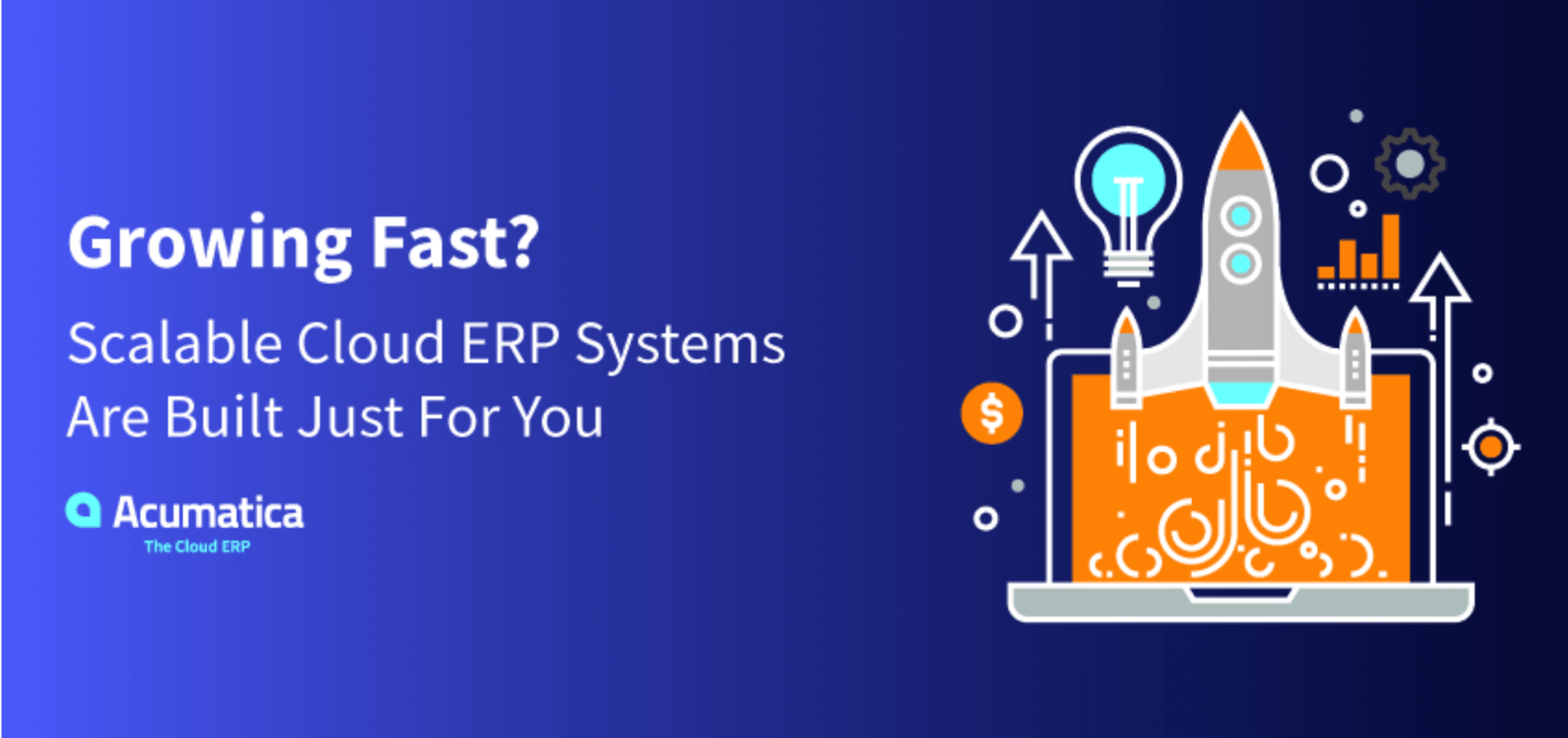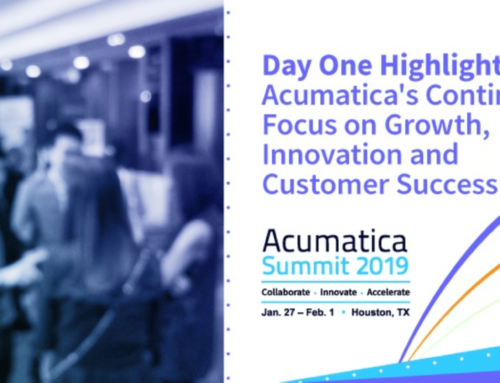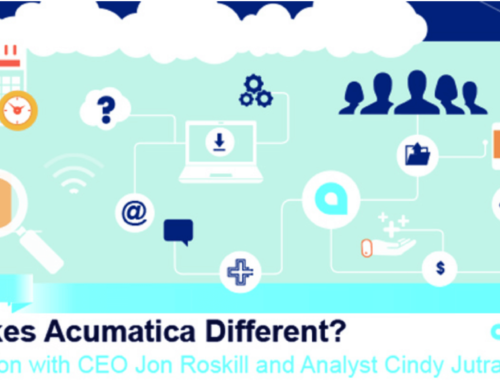By Kathy Visser-May Chief Marketing Officer at Acumatica
Every business management team wants their business to grow. The challenge is staying ahead of the changes that inevitably come with fast growth. Researching cloud ERP systems should be at the top of your to-do list and here’s why.
If you are like many midsize businesses and are using outdated systems and haven’t found a modern ERP platform that works for you, it can be hard to make important changes and improvements to your business processes when your business is growing quickly. And when we say changes, we mean with everything: new vendor relationships, product and service enhancements, an increased number of customer issues, new hires, requests for timely financial and operational reports…you name it.
The trouble is, focusing on solving immediate problems makes it hard to plan for “what’s next.” A game-changing opportunity could be staring you in the face or a new threat could be lurking behind the corner, but can you see them—let alone proactively respond?
Be ready for anything with cloud ERP
Competitive businesses need the flexibility and agility to act fast. That means your business systems, data, and processes need to keep your employees nimble and enable ongoing change. A modern, comprehensive, cloud-based ERP system and ERP platform give you the tools, insights, and scalability to keep up and keep going. Let’s take a closer look at the reasons why.
Process automation
The most common organizational growing pains— poor data processing and reporting delays, data inaccuracies, costly oversights, overtaxed employees, identifying underperforming parts of your business, and more—can be eliminated, in most cases, by expanding real-time corporate-wide information sharing with technology.
Modern cloud-based ERP systems digitize data, taking it out of spreadsheets and manual workflows, to automate key processes and provide decision-makers with on-demand insights. Additionally, with digitally-centric streamlined processes running, your employees can focus their time and energy on more strategic, business-building activities, such as improving vendor relationships and enhancing customer-facing operations.
Manageable IT
Most medium-sized businesses lack the deep pockets of their enterprise-sized counterparts, but that doesn’t mean they have to settle for second-best in the IT department. Now, mid-sized businesses are no longer limited to low end boxed software or customized on-premise solutions that bear hefty price tags and ongoing maintenance costs.
Thanks to the cloud computing delivery model, best-in-class business software is finally within your reach. There are a few reasons for this:
- Lower software costs. Users of Software as a Service (SaaS) solutions take advantage of shared resources, meaning—and let’s not get too technical here—the costs associated with data storage, software tools, and vendor support services are spread across multiple companies, resulting in more affordable pricing. And some of these cloud-based solutions don’t require user licenses, as this service can be priced on the resources you require, not the number of users.
- Lower hardware costs. Since cloud-based ERP software is accessible through the internet from any device with a browser—and not installed on individual machines as they are for legacy and most company-hosted solutions—users don’t require new computers, and the server room doesn’t need new hardware. That adds up to essentially zero IT investment up-front to get the software installed; users can get online, log in, and go
- Fewer personnel costs. Your SaaS ERP publisher and support partner can manage software maintenance and support. That can include training, troubleshooting, bug-fixing, updating, and all-around question-answering. This eliminates the need to bulk-up in-house IT teams to support ERP software while leaving existing staff with more bandwidth to focus on other revenue generating projects.
Function-up
Today, your company’s vital technology solutions need to be full function and flexible. That means you might start your foray into the ERP-sphere with the areas you’re most desperate to automate and take control of, such as financial management and CRM functionality. When you’re ready you’ll be ready to plug into new tools that support, say, distribution management and eCommerce. Or perhaps you’ll be ready for more powerful BI capabilities.
As your accounting, reporting, compliance, and other “fill-in-the-blank” requirements become more sophisticated, you’ll need your ERP system to accommodate more and do more. After all, you’ll have more customers, more data, and more at stake in your competitive marketplace. Cloud ERP systems are designed for you to start small, relatively speaking, and expand business processes into new territory as soon as you’re ready. To enable that, modern cloud-based solutions are built with flexible interfaces (APIs), so they’re easily integrated with other cloud-based applications.
Cloud ERP systems on-the-go
We can’t not mention the mobile-friendly nature of cloud ERP software as another fine point of cloud computing. Staff, customers, and suppliers can access their information around-the-clock, anywhere, and on any connected device – without adding additional user licenses — upping their functionality — and work in a way that’s consistent with how they’re managing their personal lives: on-the-go, collaboratively, and always ready for “what’s next.”
If a cloud-based ERP and a cloud ERP platform sound like the answer to your business management needs, contact our team. They can help you transform your business from just keeping up to being ahead of the game.






Leave A Comment
You must be logged in to post a comment.